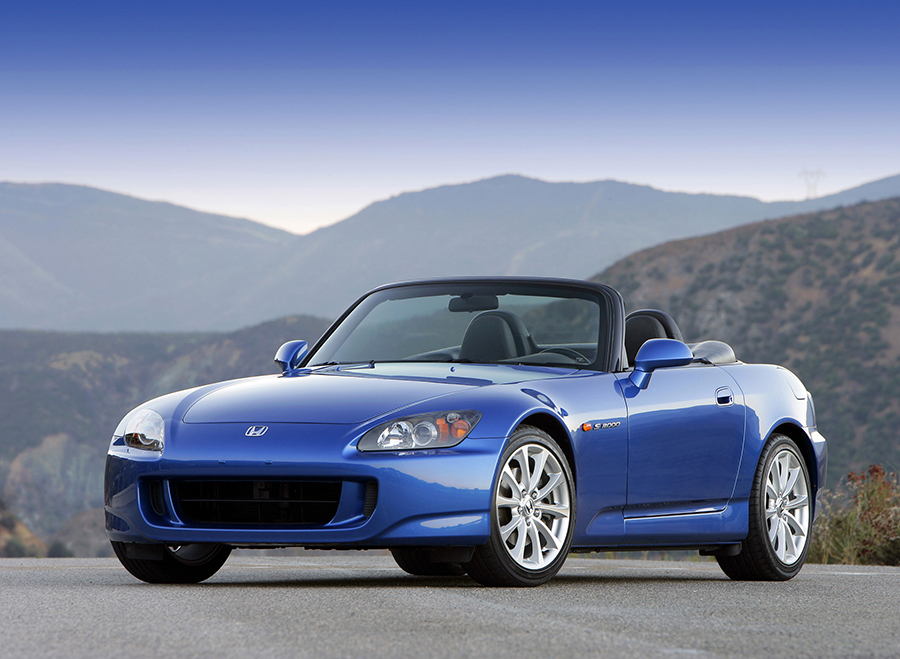Honda’s answer to the MX-5 wasn’t to join it but beat it into submission with its astonishing S2000, offering 240 bhp from a race-bred four-cylinder engine without a turbo in sight. Here’s our Honda S2000 buyer’s guide.
When a company like Honda decides to build something special to shout about its 50 years in business then you know the result is going to be impressive and so it was when the wraps came off the S2000 in 1999. Today, the S2000 is one of the best used cars to buy, given its fun, high-revving engine and sharp chassis. Although prices are on the climb, so you better hurry if you want one!
Fresh on the heels of the technology showcase which was the NSX, the S2000 was in concept a kind of grown-up Mazda Miata, taking that car’s back-to-basics approach but adding significantly more sophistication and nearly double the power output.
S2000 Appeal
The heart of the Honda S2000 was its engine: a 2-liter (or 2.2-liter on AP2 cars) twin-cam four-cylinder into which the firm threw the total of its accumulated knowledge over its half-century of existence, with many of the design team taken from the F1 engine programme. The result was a power output of 246 bhp which was achieved without turbocharger or supercharger but by adding the firm’s trick VTEC variable cam timing and letting it spin to a heady 9000rpm.
You could be forgiven for expecting the result to be a lumpy, awkward unit to drive but in reality it was as docile in everyday use as a basic Civic and was also able to meet the strict California emissions regulations. Keep your foot in it until the needle hit 6500 rpm though and the change in character was starting as the VTEC did its thing and the needle leapt to the 9000 rpm redline. At this point, the short-shifting six-speed box came into its own and the grip afforded by the double wishbone chassis was much appreciated.
The body was designed to achieve class-leading rigidity but the Honda S2000 also weighed in at just 1260kg, meaning performance was lively: 0-62 mph in just 6.2 seconds and a top speed of 150 mph. Not bad going from a 2-litre four-pot.
All of which means there’s nothing quite like the S2000. Yes, there are open two-seaters which provide similar performance but none of them manage it with such elegance of engineering and without using either much larger engines or at least one turbo. For that reason alone, it deserves the status of modern classic and that’s before you factor in the superb Honda build quality and the neat styling which successfully updated the traditional roadster shape without resorting to clumsy retro.

Honda S2000 history
Launched in 1999, the AP1 S2000 was offered with a high-revving 2.0-liter engine producing 246bhp. Standard spec was generous, including an electric roof, leather seats, HID lights and air conditioning. For the 2002 model year, the car received revised spring and damper settings to make it less twitchy, a heated glass rear window in the convertible top and minor cosmetic details: a new leather and alloy gearknob, silver stereo cover, darker alloy wheels, chrome rings around the tail lights and larger Honda badges.
In 2004, the car received more major modifications. In North America, cars from 2004 onwards are considered AP2 cars, which reflects the increase in engine capacity from 2.0-liters to 2.2-liters, at the expense of revs, down to 8,200 from 8,800.
Other major changes surrounding the suspension, which softened the rear, as well as including more major suspension changes including a softer rear end, revised bumper design and 17-inch wheels. The VTEC ‘switchover’ was made smoother, with many owners reporting that these revised engines use less oil. A welcome change for the 2006 model year was the change to a drive-by-wire throttle instead of a mechanical cable, which permitted the option of traction control. Many owners pushing too hard in the wet had discovered just how easy it was to spin a rear-drive car like the Honda S2000 and this saved many from embarrassing spins. You can recognize these cars at a glance by the lack of a hole in the center of the headrests.
The final change came with the 2008 model year, which introduced traction control as a standard feature and brought more changes to spring and dampers as well as different alloy wheels with a wider spoke design. Production of the S2000 finally ended in 2009 after more than 110,000 had been sold.
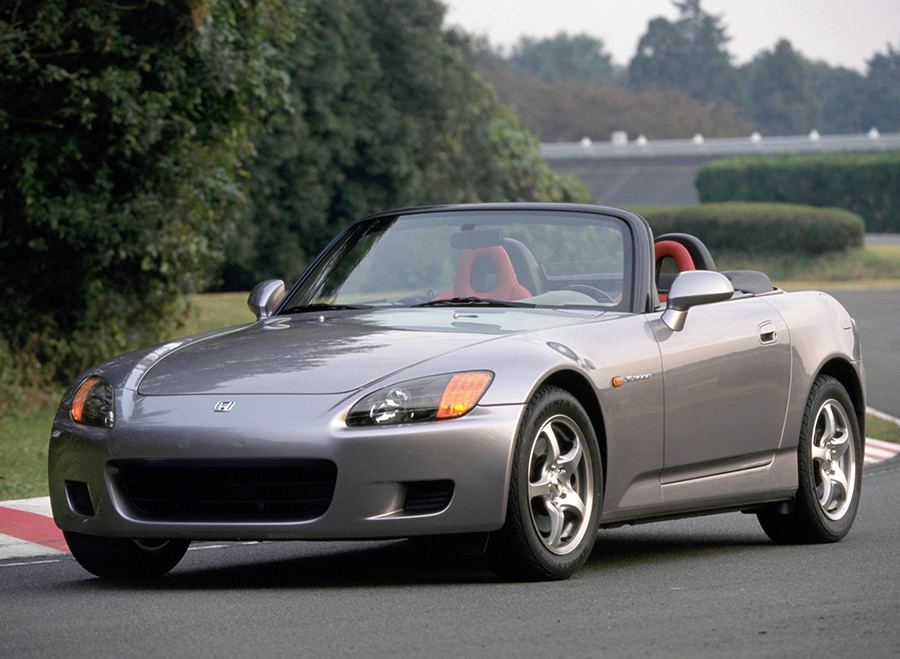
Honda S2000 most common problems
AP1 (1999-2003)
- Oil consumption. While using VTEC, oil consumption is known to be high. Not so much an issue, but one to be aware of.
- Transmission buzzing while decelerating. Annoying, not likely to cause long term damage.
- Grinding when shifting into 2nd gear.
- Vibration during acceleration. This is due to a pitted CV boot.
AP2 (2004-2009)
- Gear lever pops out of even gears.
- Dashboard longevity. Bubbling and blisters appear over time.
Thanks to S2Ki forum for information from genuine owners.
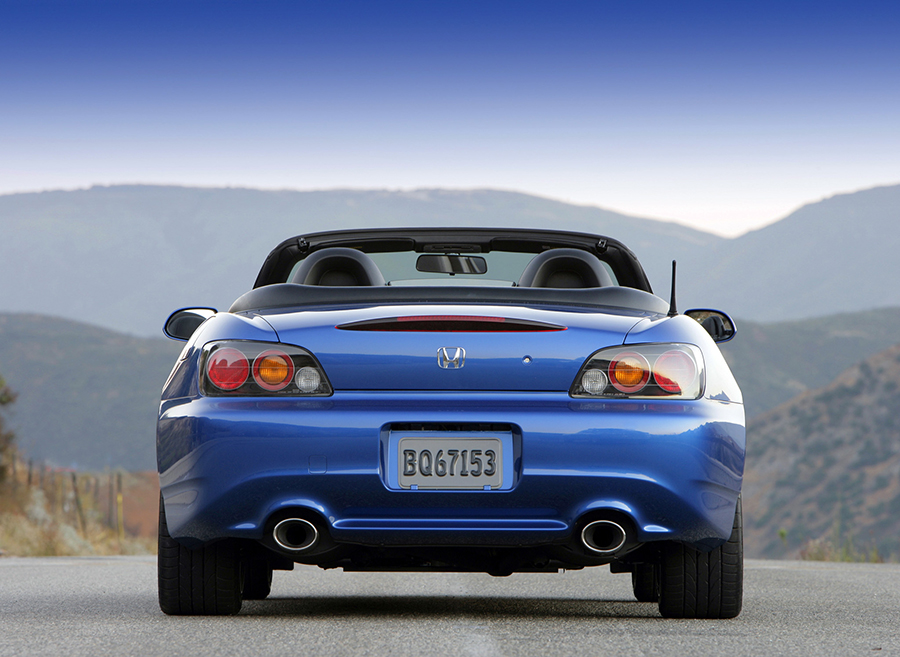
What to look for when buying a Honda S2000
Bodywork
For once, we won’t be advising you to grovel under the car looking for structural rust, but instead be on your guard for accident damage. It’s a powerful, lightweight car driven by its rear wheels and with pre-2006 models not coming with electronic traction control they’re notoriously easy to spin, especially in the wet on less than perfect tires. For that reason it pays to make the usual checks of panel gaps, overspray and paint mismatch.
The electric roof is generally reliable too, although many don’t sit flush with the bodywork when lowered as the elasticated tensioning straps tend to weaken with age. Replacement Honda S2000 roofs are available which will make the hood fold neatly again. If the roof catches at the screen rattle at speed, this can be down to worn striker plates which are easily replaced with later parts which are thought to be made from harder metal.
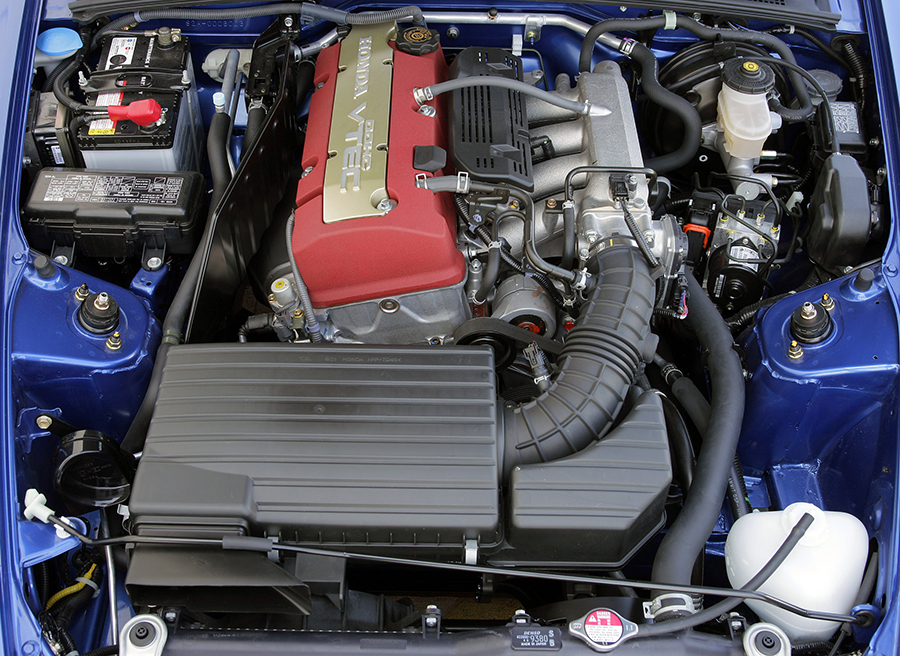
Engine & Transmission
Considering its impressive specification, the Honda engine is surprisingly free of any issues, with most problems being niggly rather than fundamental. A faulty MAP (Manifold Absolute Pressure) sensor can cause intermittent rough running, ‘kangarooing’ at slower speeds and misfires in the VTEC rev range but is easily cleaned or replaced. Corroded wiring to the ECU can cause rough running problems which can be tricky to diagnose. Other problems can include failed oxygen sensors, intake air temperature sensors and injectors but all are easily sorted and are simple DIY fixes too. A noisy cam chain can be caused by a failing tensioner.
The gearbox in the S2000 was developed specially for the car with the aim of making it light and also as narrow as possible in order for the engine and box to sit as far back as possible in the bodyshell. The design features lightweight gears working with a similarly lightweight engine flywheel and is generally a reliable unit although some hard-driven cars have shown problems with the synchro in higher gears. Some owners have reported that heavy clutch action has been cured by carefully greasing the release fork through the aperture in the bellhousing using grease on the end of a piece of wire.
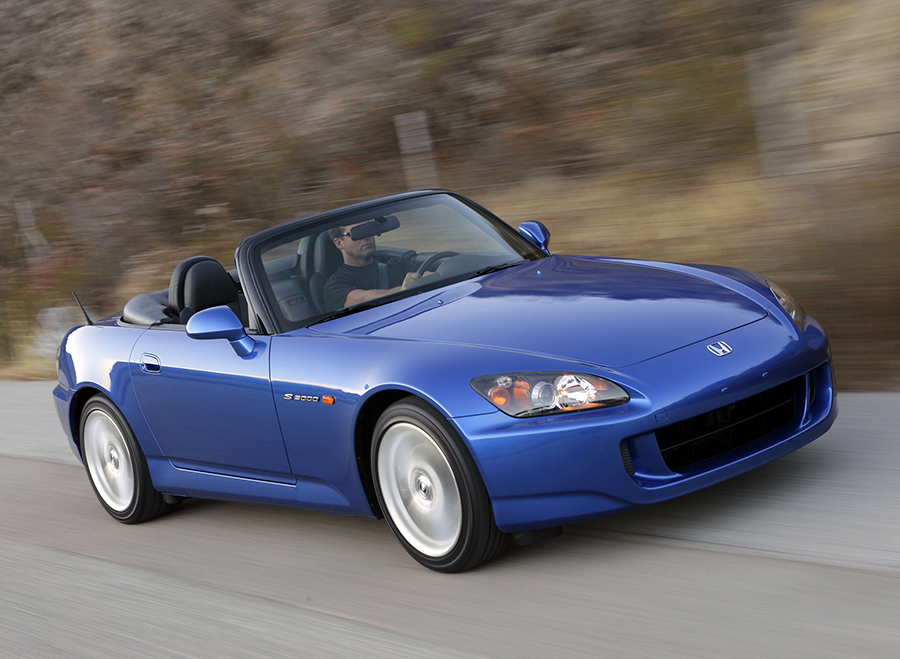
Steering & suspension
In order to reduce the parasitic drag from an engine-driven hydraulic pump, Honda went for electric power steering on the S2000. Derived from the NSX setup, it varies the level of assistance according to road speed and also uses a variable gearing ratio to provide progressively quicker steering as the wheel is turned further. It’s a reliable system and a dashboard warning light will tell you if something’s wrong.
The suspension is one of the car’s few Achilles’ Heels though. It’s described as an ‘in-wheel’ design by Honda on account of the componentry being shaped so that most of the structure can be accommodated inside the standard 16-inch wheel, in turn allowing a lower bonnet and rear deck.
In standard form with everything working properly, the result is superbly balanced handling and a lovely taut feel, but sadly many cars are suffering from seized wishbone bolts where they pass through the center of the metaplastic bushes connecting them to the bodyshell. This isn’t a problem until a wheel alignment is needed – and these cars are sensitive to the correct alignment. At this point you’ll discover that the bolts can’t be moved and that Honda will supply only a complete arm and not the bush separately. Many keen owners and specialists will grease the bolts with anti-seize to prevent this happening.
At the front end, the castor or ‘compliance’ bushes can split. Again, Honda doesn’t sell the bush by itself, but aftermarket parts are available.

Honda S2000 Brakes & Tires
You’re looking at 11.8 inch vented discs on the front with 11 inch solid discs at the rear and they’re well up to the car’s performance. If a car has uprated brakes, ask yourself why: it could have seen a fair few track days. Service parts aren’t too expensive for a car of this caliber: a set of front pads is from $50 /£47, although the front rotors are costly at around $100 / £90 each.
The S2000 is very sensitive to the correct tires and the original Bridgestone ES02JZ were specially developed for the car. These were later replaced for the 2004 model by Bridgestone RE050s which are a well regarded tire and a good replacement for the originals which are no longer available.
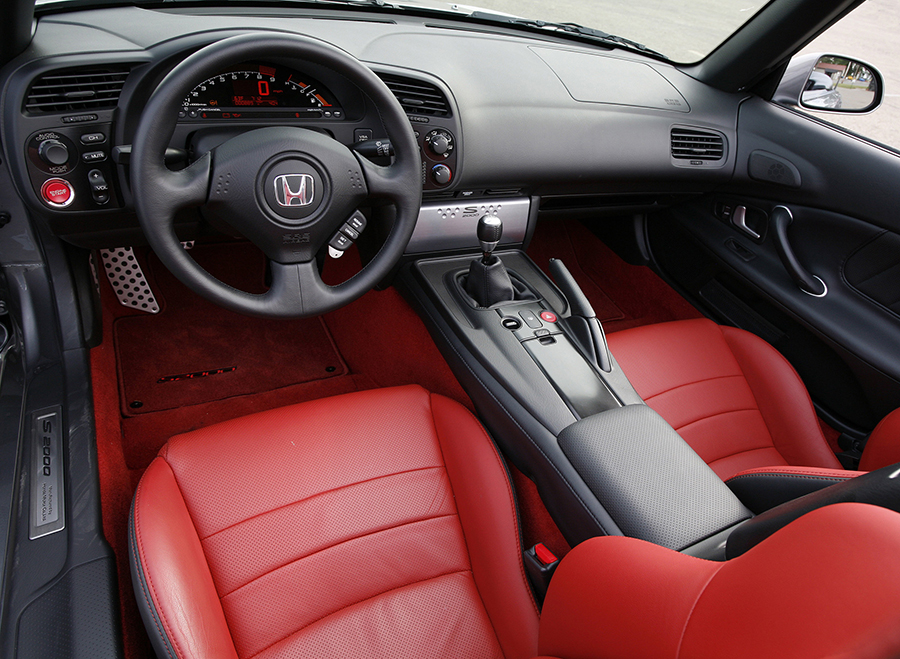
Interior
Really? It’s a Honda you’re talking about so if you find any loose or rattly trim then it means someone has been in here fitting aftermarket stereos or alarms. If you do see an upgraded stereo, check that it works with the original remote controls. What seems to be a squeaking dashboard can often be the bonnet release catch or the rear view mirror mounting.
If you find a puddle of water in the passenger footwell, don’t assume the roof is leaking – it’s quite likely the condensation drain from the A/C unit which has been kicked off. It’s a simple job to slip it back into place.
Dashboards are known to bubble over time on later facelifted cars from 2004.
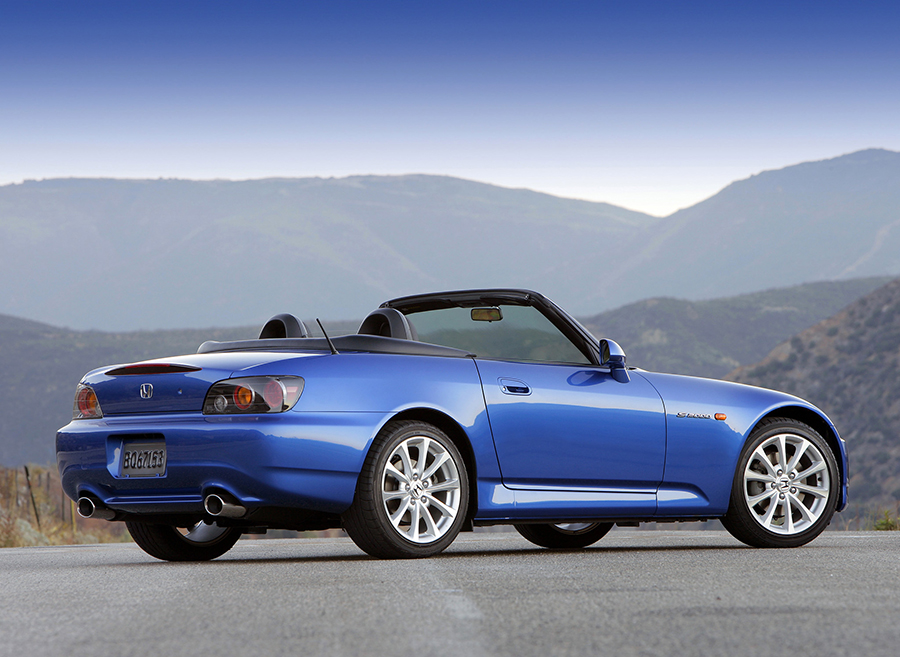
Honda S2000 values
Over recent years, the rush for JDM vehicles has seen the best Japanese cars climb quickly in value. While just a few years ago, a budget of 10,000 USD or GBP would have got you a clean example of either pre-facelift of post-facelift S2000 (AP1 or AP2: remember, Europe only got the AP1), today, that figure is almost your starting point. In North America, high-mileage cars start from $12,000. While the UK, that figure is closer to £10,000. The newer model you choose the more expensive examples get. The upper edge of that price bracket is around $50,000 in the US, with a special edition 2008 S2000 CR with 50k miles selling for $51,000 just a few months ago.
In the UK, the most expensive cars are Edition 100 models, which were the last of the line cars. Budget £25,000-£35,000 for an example. Similar with the North American market, pre-facelift cars are cheaper, starting from £10,000 and the median range of all cars being around £12,000-£15,000. Low-mileage, 2008 models demand £18,000+.
Make sure you check out our review of the S2k here.
Tech spec: Honda S2000
Engine: 1997cc, four-cylinder
Power: (bhp/rpm) 240/8300
Top speed: 150 mph
0-60mph: 6.2 secs
Consumption: 29 mpg
Gearbox: 6sp man
Length: 4135 mm
Width: 1750 mm
Weight: 1260 kg

